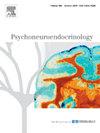生物学衰老的寿命方法:早期逆境、过去一年的创伤和女性端粒长度。
IF 3.6
2区 医学
Q2 ENDOCRINOLOGY & METABOLISM
引用次数: 0
摘要
一生中的不良经历会增加健康状况不佳的风险,可能部分是通过加速生物衰老来实现的。从生命历程的角度来看,成年期的不良经历对生物衰老的预测程度会因早期生活中的逆境而有所不同,但很少有研究对此进行了测试。在这项预先登记的横断面研究中,我们检查了早期生活逆境和过去一年潜在创伤事件的关联,以及它们与端粒长度的相互作用,样本来自不同种族和民族,主要是低收入妇女( = 127)。我们还测试了毛发皮质醇作为连接早期生活逆境和潜在创伤事件与端粒长度的潜在途径。在采访中,女性报告了早期生活逆境的经历,以及过去一年潜在创伤事件的数量和负面影响。收集颊细胞和毛发样本,分别评估端粒长度和皮质醇。过去一年潜在创伤事件的负面影响越大,端粒长度越短。然而,这种联系的强度取决于早期生活的逆境,并且在早期生活逆境的较低水平时最强。更大的早期生活逆境和潜在创伤事件的负面影响都与较高的毛发皮质醇有关,但毛发皮质醇与端粒长度无关。结果表明,早期生活逆境改变了随后的创伤和端粒长度之间的关系,并促进了对生命逆境如何影响生物衰老的理解。这些发现可能为未来的研究提供信息,以检验动态的生物过程,这些过程将终生不良经历与健康联系起来,并采用纵向设计。本文章由计算机程序翻译,如有差异,请以英文原文为准。
A lifespan approach to biological aging: Early adversity, past-year trauma, and telomere length in women
Adverse experiences over the lifespan can increase risk for poor health outcomes, likely operating in part through accelerated biological aging. From a life course perspective, the extent to which adverse experiences in adulthood predict biological aging will vary as a function of early life adversity, yet few studies have tested this. In this cross-sectional, pre-registered study, we examined associations of early life adversity and past-year potentially traumatic events and their interaction with telomere length in a sample of racially and ethnically diverse and predominantly low-income women (n = 127). We also tested hair cortisol as a potential pathway linking early life adversity and potentially traumatic events with telomere length. Women reported on experiences of early life adversity and the number and negative impact of past-year potentially traumatic events during interviews. Buccal cells and hair samples were collected to assess telomere length and cortisol, respectively. More negative impact of past-year potentially traumatic events was associated with shorter telomere length. However, the strength of this association was conditional on early life adversity and strongest at lower levels of early life adversity. Both greater early life adversity and more negative impact of potentially traumatic events were associated with higher hair cortisol, but hair cortisol was not associated with telomere length. Results suggest that early life adversity modifies the association between subsequent trauma and telomere length and advances understanding of how lifespan adversity shapes biological aging. These findings may inform future research to examine dynamic biological processes linking lifespan adverse experiences to health using longitudinal designs.
求助全文
通过发布文献求助,成功后即可免费获取论文全文。
去求助
来源期刊

Psychoneuroendocrinology
医学-精神病学
CiteScore
7.40
自引率
8.10%
发文量
268
审稿时长
66 days
期刊介绍:
Psychoneuroendocrinology publishes papers dealing with the interrelated disciplines of psychology, neurobiology, endocrinology, immunology, neurology, and psychiatry, with an emphasis on multidisciplinary studies aiming at integrating these disciplines in terms of either basic research or clinical implications. One of the main goals is to understand how a variety of psychobiological factors interact in the expression of the stress response as it relates to the development and/or maintenance of neuropsychiatric illnesses.
 求助内容:
求助内容: 应助结果提醒方式:
应助结果提醒方式:


